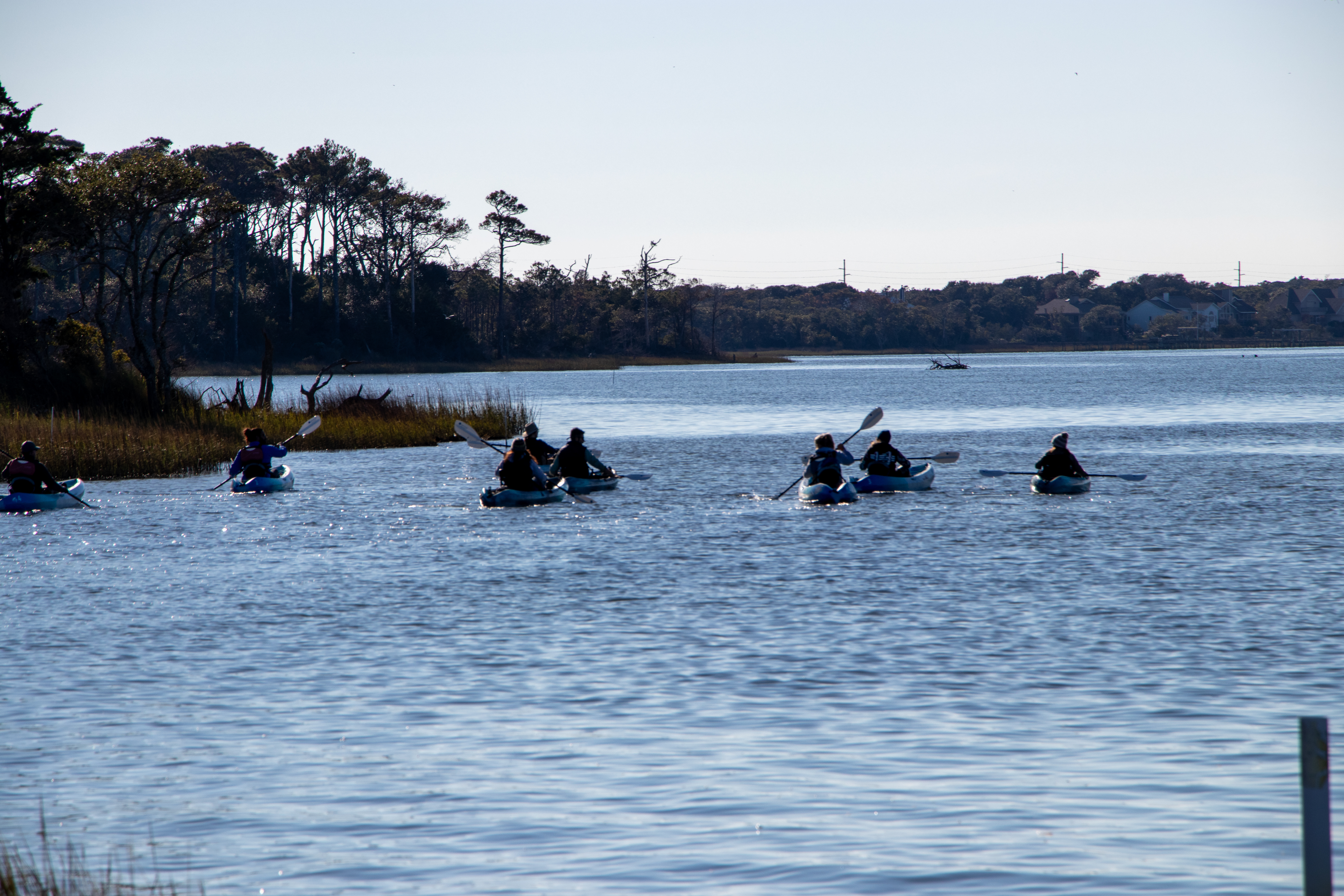
The North Carolina Aquarium at Pine Knoll Shores has more than 50 exhibits and over 4,500 animals as the NC Aquarium takes you on an aquatic journey from the mountains to the sea. Watch river otters play, touch a stingray, and talk to divers as they swim among giant sharks and other marine life. With more than 400,000 visitors annually the aquarium is an ideal place to learn about coastal habitats and the plants and animals.
However, it is also one of the many places along the coast of North Carolina experiencing shoreline erosion from sea level rise, increasingly variable storms, and high wave activity.
The Projects
In 2024, the Coastal Federation partnered with the North Carolina Aquarium at Pine Knoll Shores and the NC Division of Parks and Recreation to construct a 4,214-foot living shoreline at heavily eroded areas along the Theodore Roosevelt Natural Area on Bogue Sound. This living shoreline will help protect educational infrastructure and nature trails while supporting important salt marshes and oyster habitats.
The living shoreline was constructed using Natrx’s ExoFormsTM, Native Shorelines’ QuickReef©, and Sandbar Oyster Company’s Oyster CatcherTM. Native Shorelines also helped with the project design and permitting. Volunteers helped plant thousands of marsh grass plants along the shoreline in 2023 and 2024.
Funding from this project will also support a 3-year study conducted by Dr. Rachel Gittman and Dr. Hannah Sirianni at East Carolina University, and Dr. Joel Fodrie at the University of North Carolina Institute of Marine Sciences to investigate the relationship between living shorelines and the distribution of seagrass and salt marsh, turbidity, sedimentation, and their impact on fish habitat value and usage. This study will improve our understanding of how living shorelines interact with the surrounding ecosystem and help guide future living shorelines’ design.
This project was funded by the North Carolina Department of Natural and Cultural Resources/North Carolina Land and Water Fund State Appropriations Funding and the U.S. Fish and Wildlife Service-Southeast Aquatic Resources Partnership
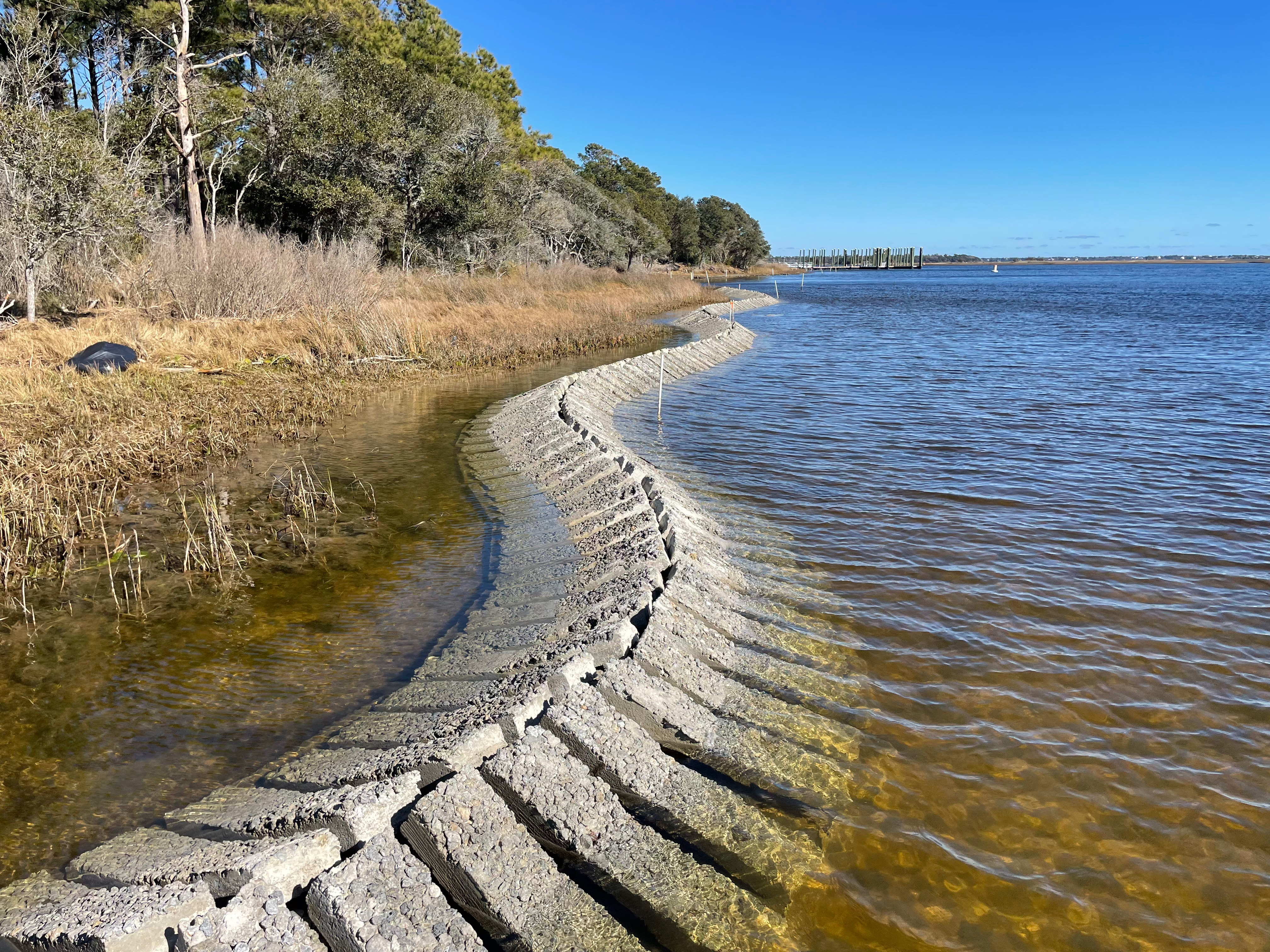
Photo by: Native Shorelines
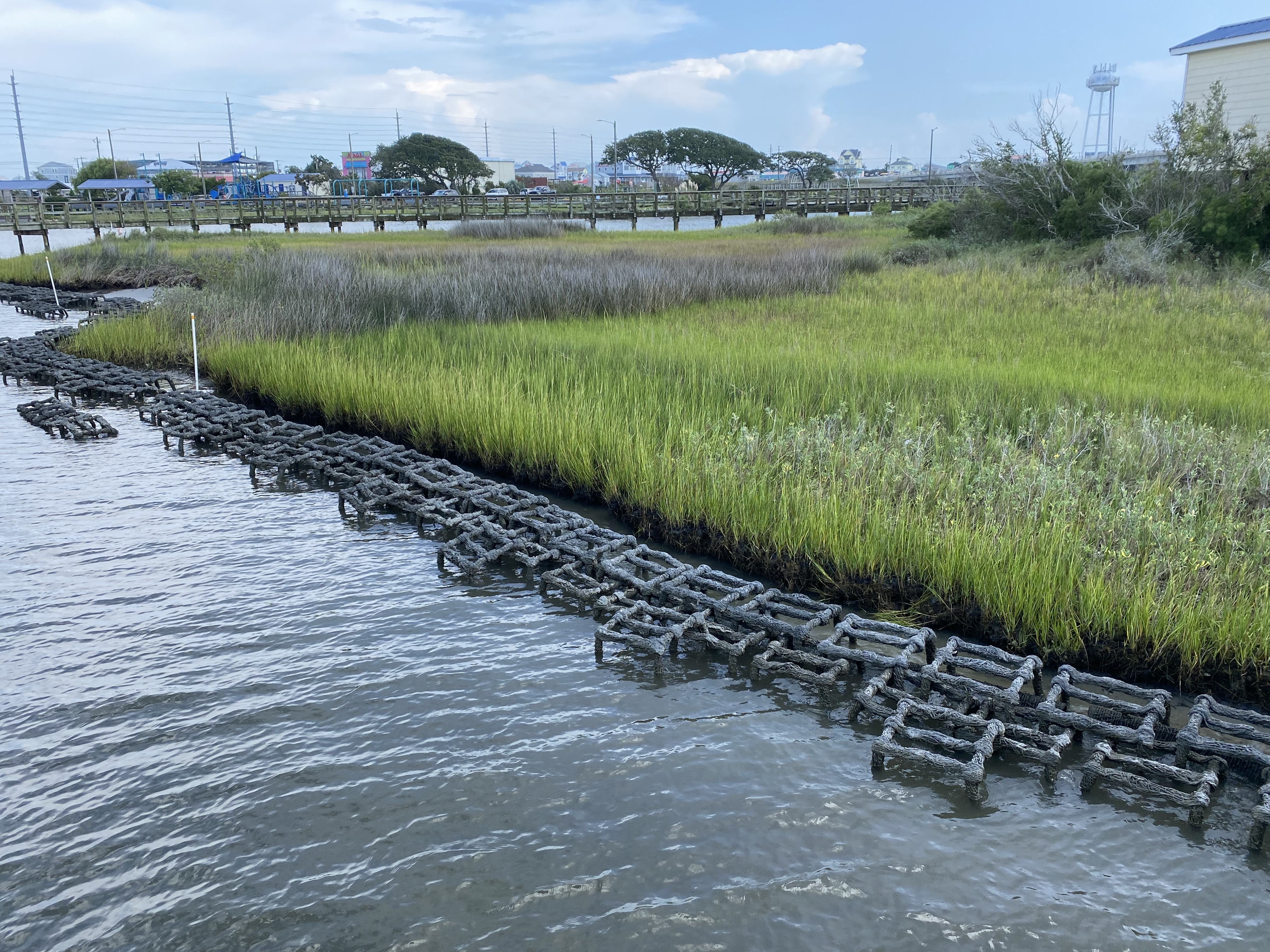
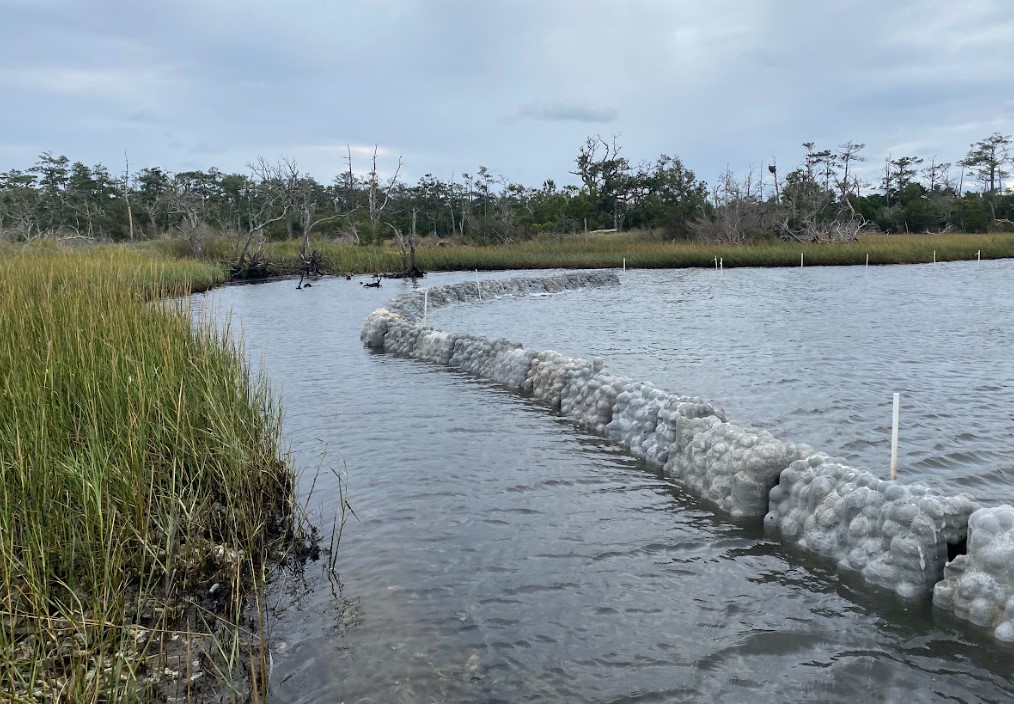
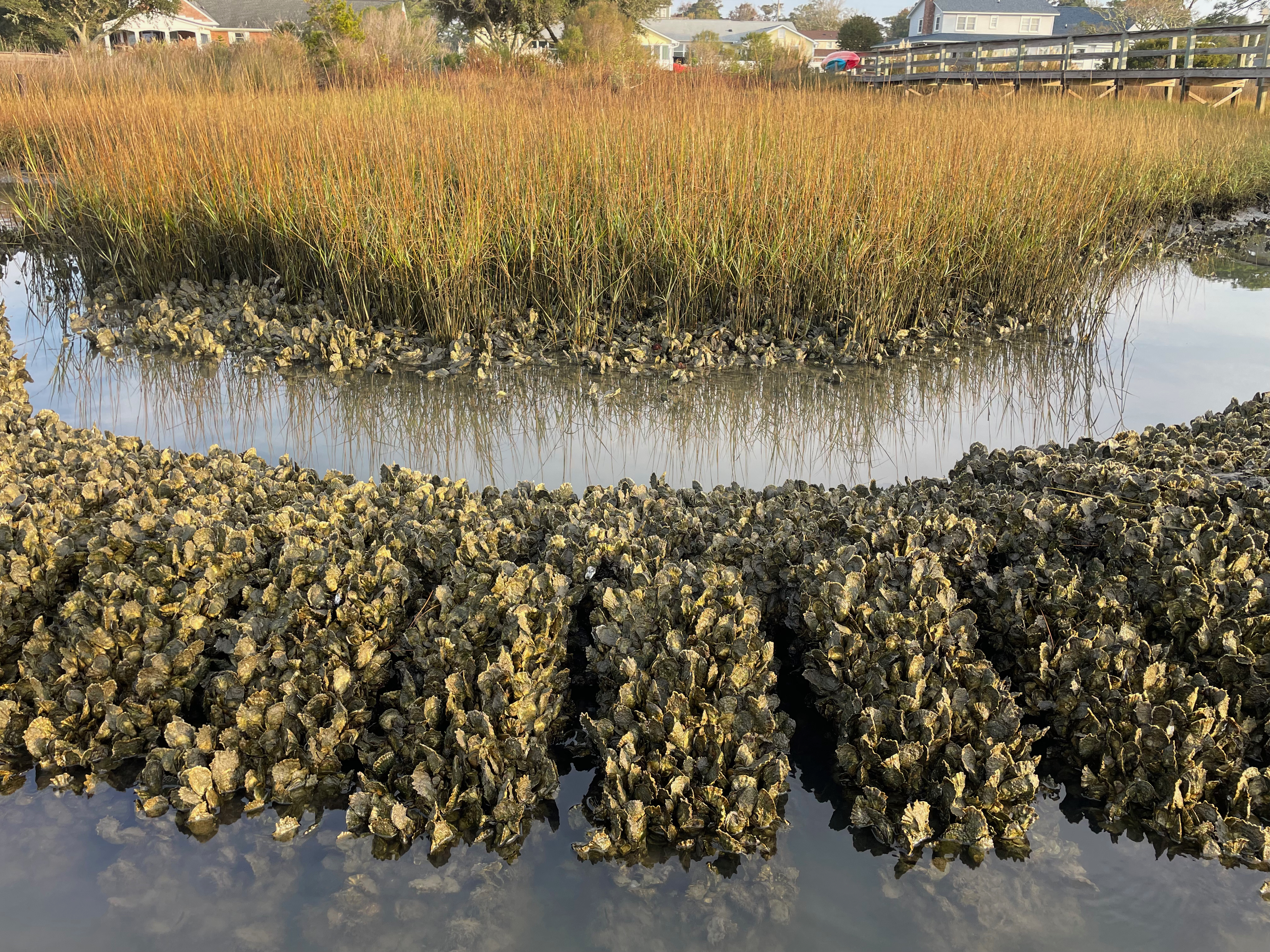
Photo by: Native Shorelines
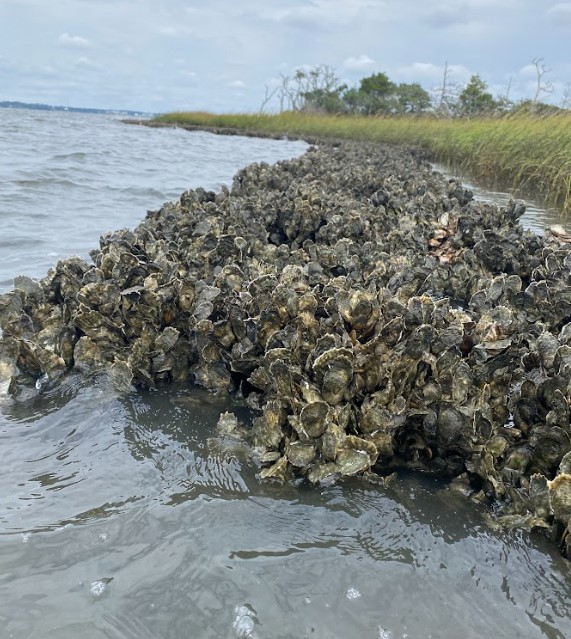
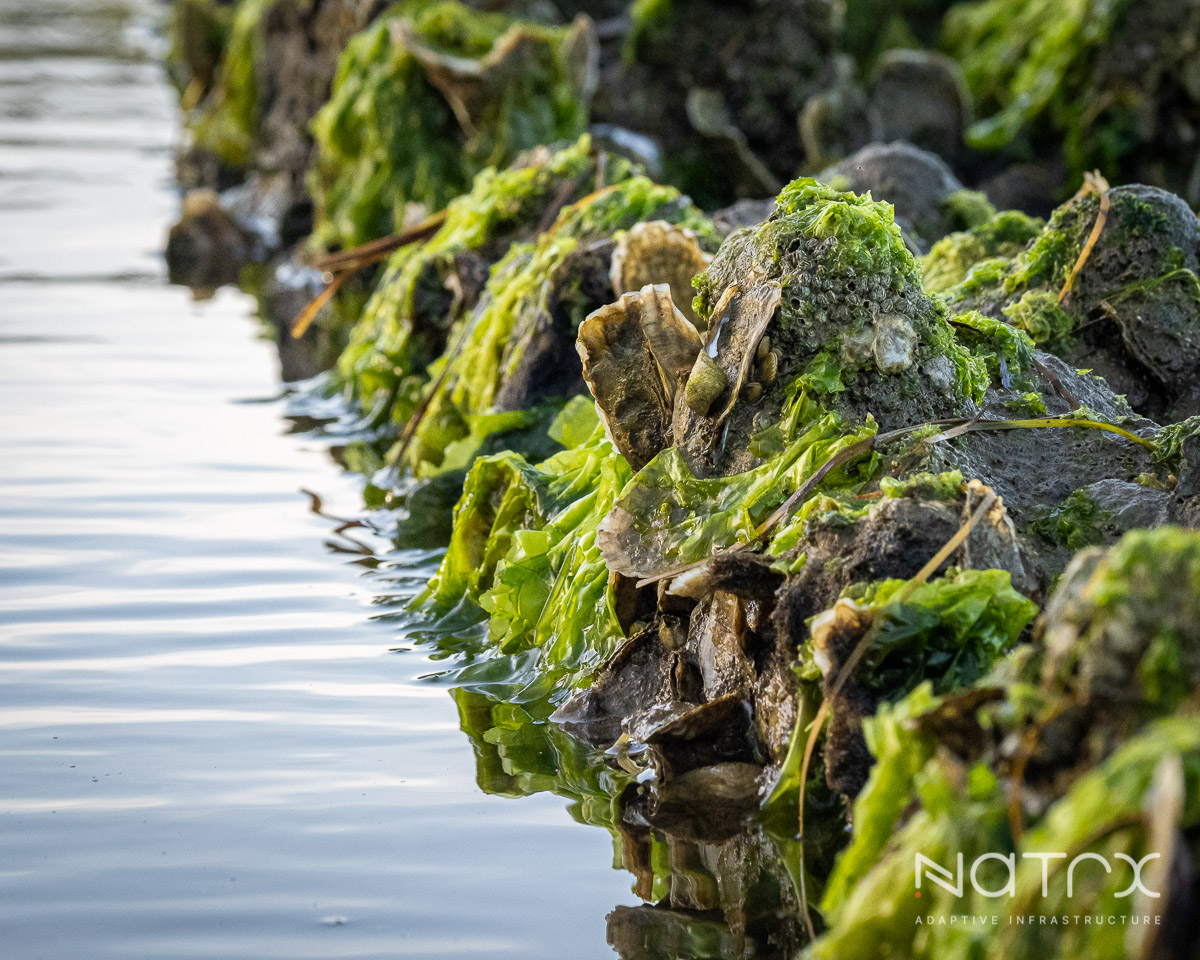
Photo by: Natrx
Working with the Aquarium
In 2022, the Federation and partners constructed a 350 linear foot offshore sill using Oyster CatcherTM as part of this project 10,000 plugs of salt marsh grasses were also planted to help further restore the eroded area.
In 2017, an oyster marsh toe revetment was built to hold sediment in place and absorb wave energy. An oyster sill will also absorb wave energy and allow sediment to accumulate and promote salt marsh growth. Salt marsh plants will be planted landward behind the sill in the spring following the deployment of the oyster reef materials.
In 2001, the Federation stabilized a portion of the shoreline along the aquarium’s property with a stone sill and landward salt marsh grass plantings, 1,500 marsh plants, and 6,000 pounds of oyster shells.
